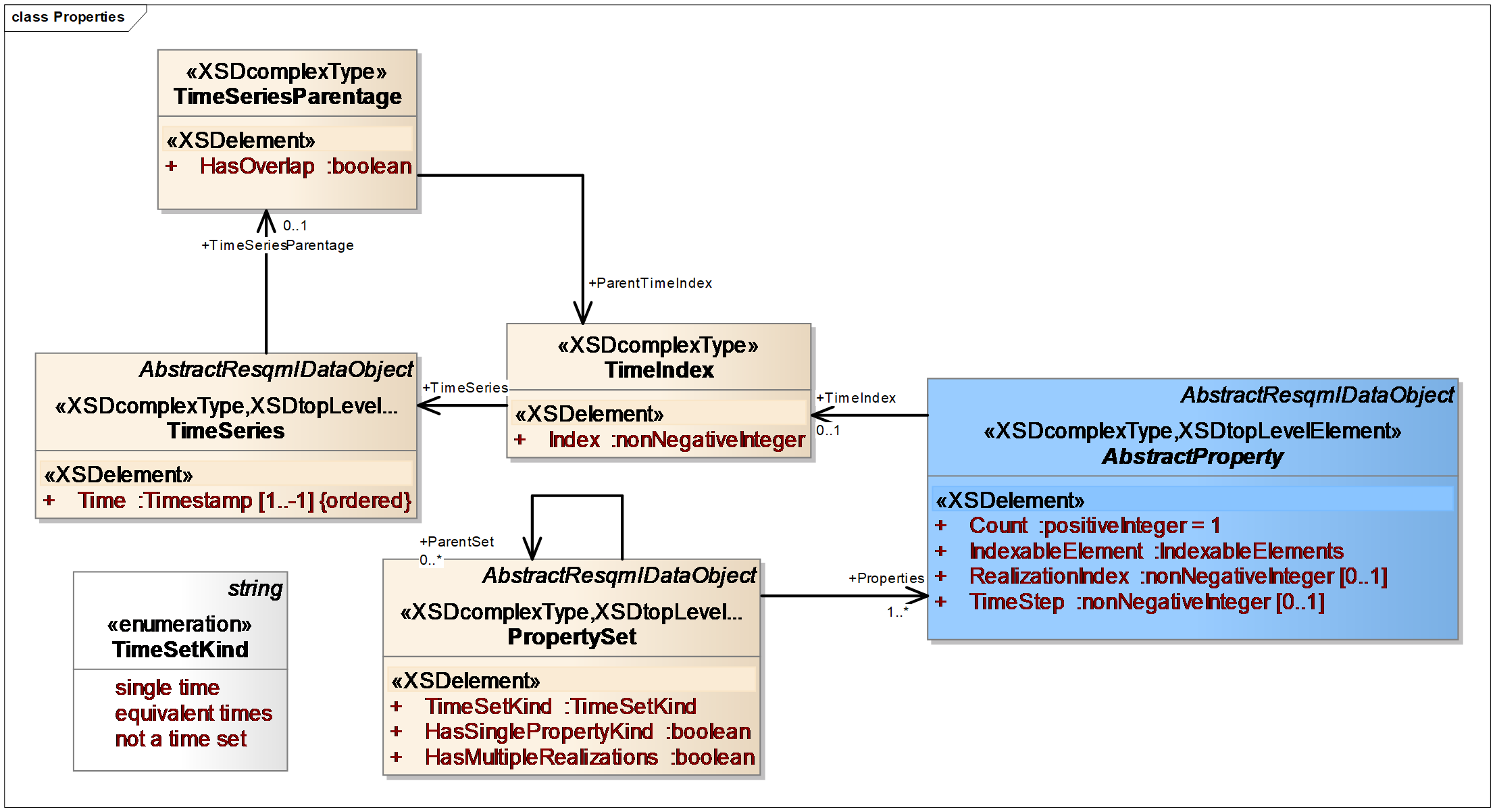4.3.3 Time: Time Index, Time Series, Time Stamps , and Property Series
| Topic Version | 1 | Published | 09/11/2015 | |
| For Standard | RESQML v2.0.1 | |||
RESQML includes several time concepts, which are listed and described here. The time usage for representations within RESQML, e.g., for properties and geometry, uses a time index into a time series (Figure 4.3.3-1). The use of a time series as a top-level data object allows a RESQML reader to determine all of the data times in use within a data set, without needing to interrogate individual properties or geometries. This approach also simplifies the treatment of properties in reservoir simulation where we may have computed many properties during a simulation run, but all of which share the same time series.
- Time Series. Stores an ordered list of times, for example, for time-dependent properties, geometries, or representations. It is used in conjunction with the time index to specify times for RESQML.
- TimeSeriesParentage. Indicates that a time series has the associated time series as a parent, i.e., that the series continues from the parent time series.
- Time Index. Index into a time series. Used to specify time. (Not to be confused with time step.)
- Time Stamp. XML dateTime, with an optional year offset to capture very long time intervals (e.g., geologic time).
- Property Series. Allows us to capture the evolution of property values through time and/or multiple realizations of these values during stochastic processes (see 17.2 Property Series ).
